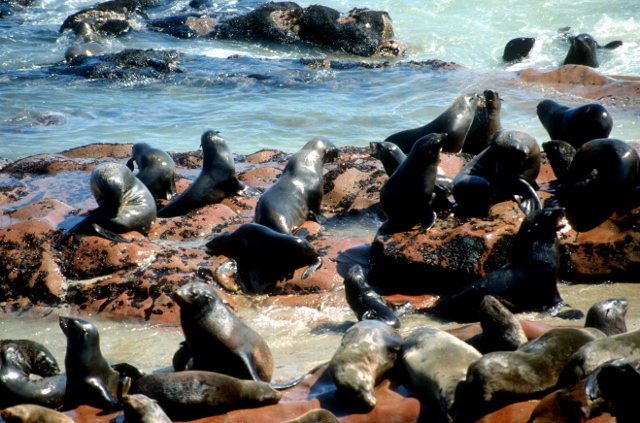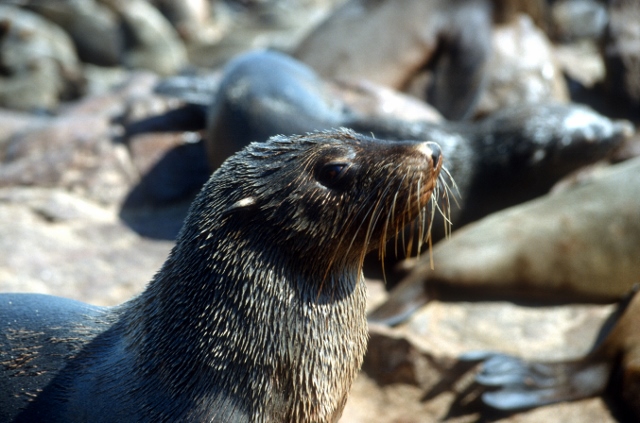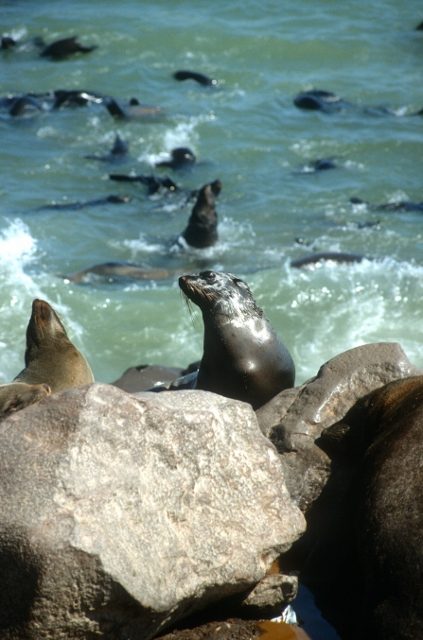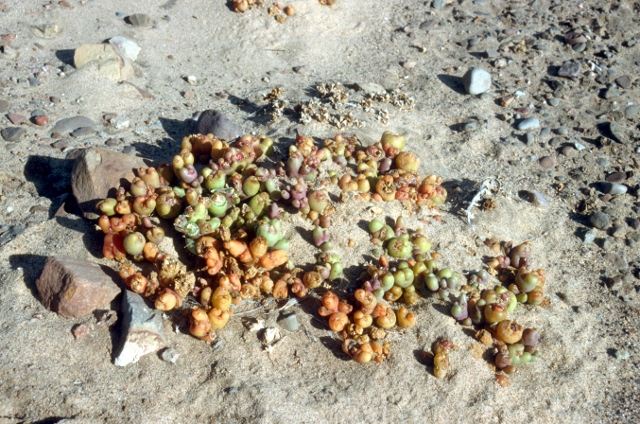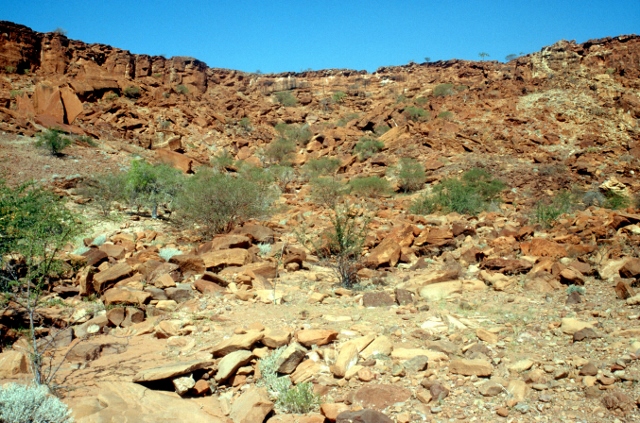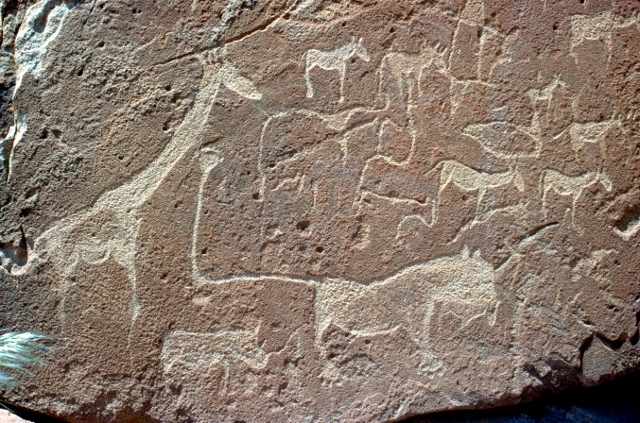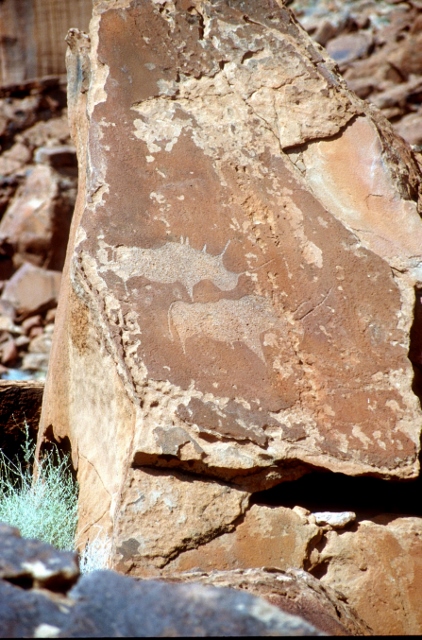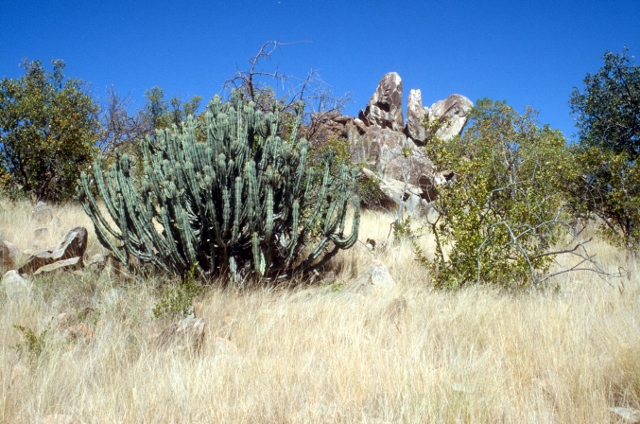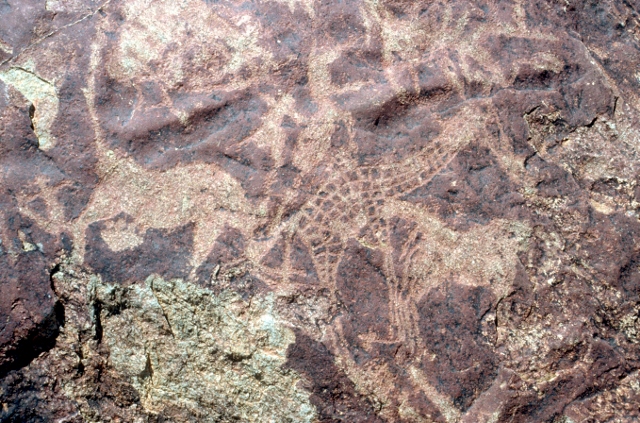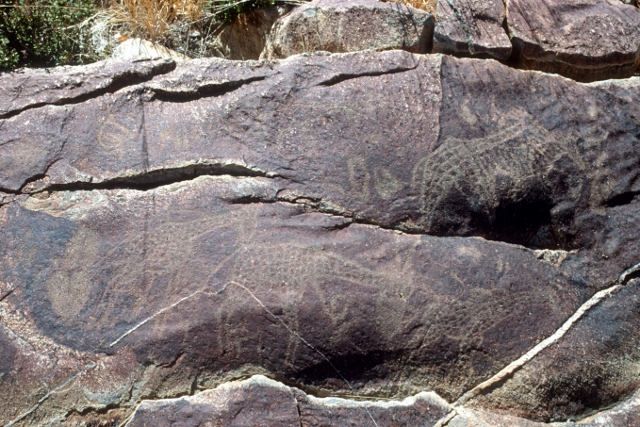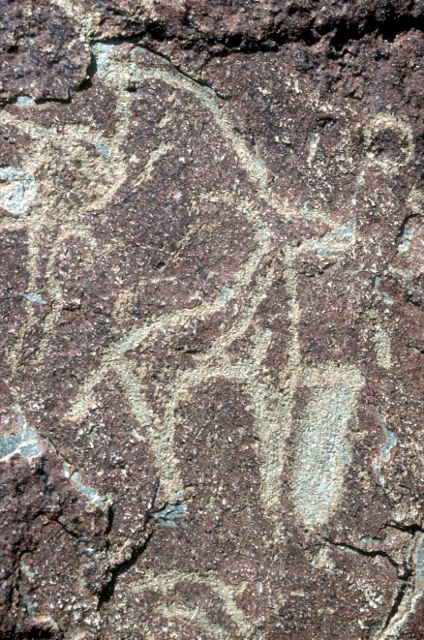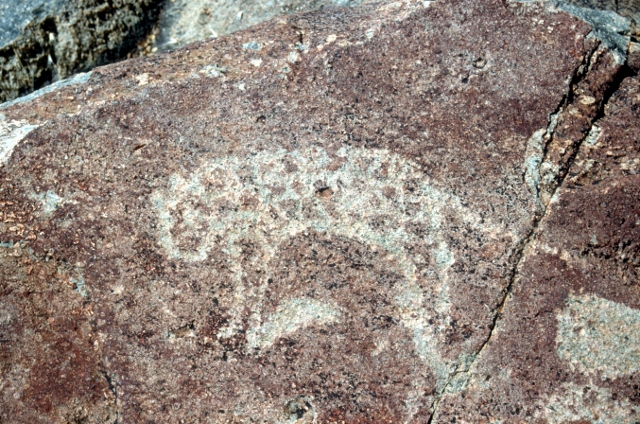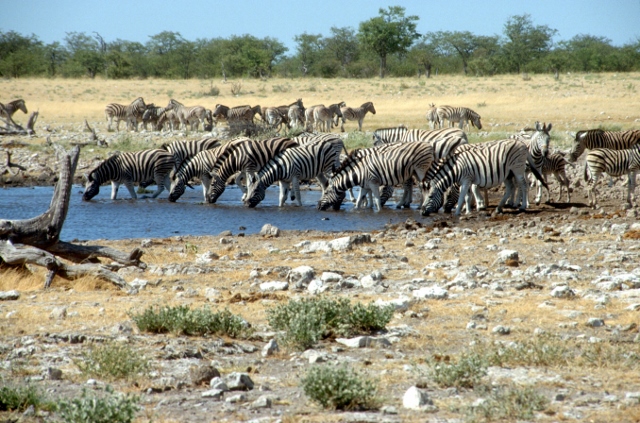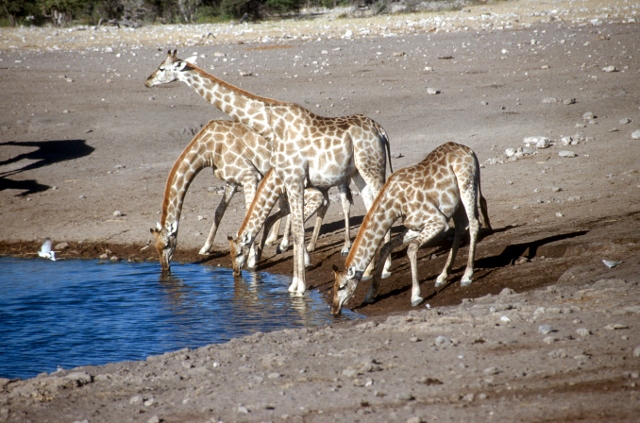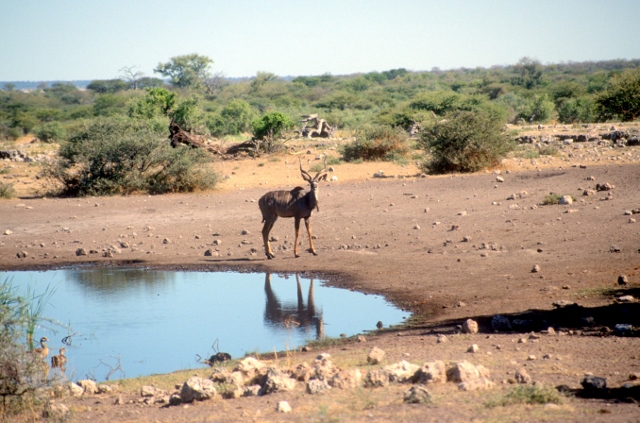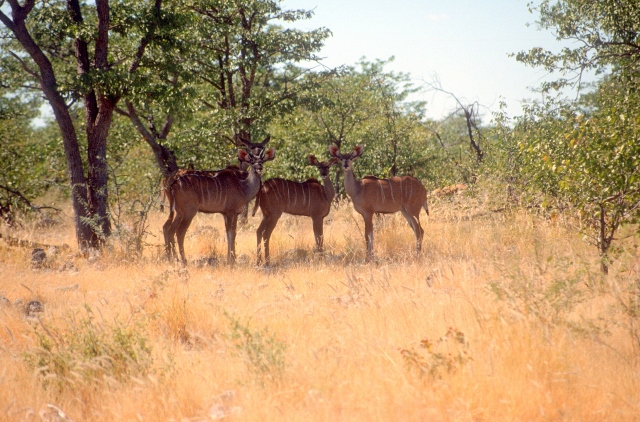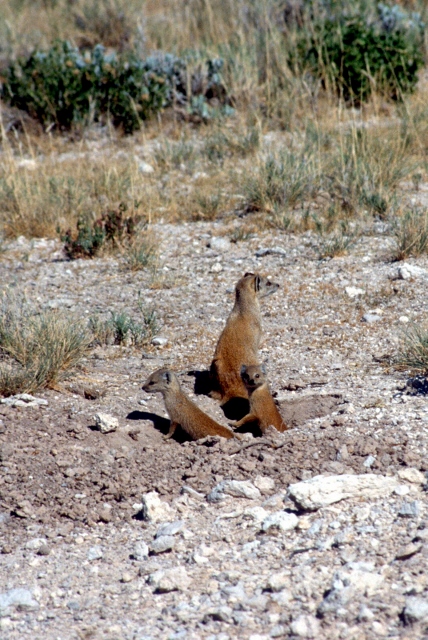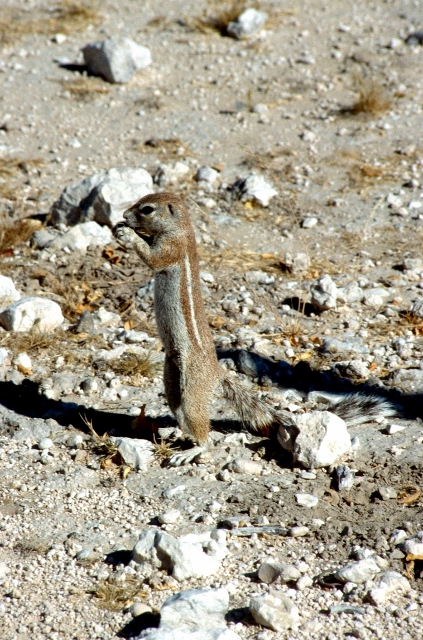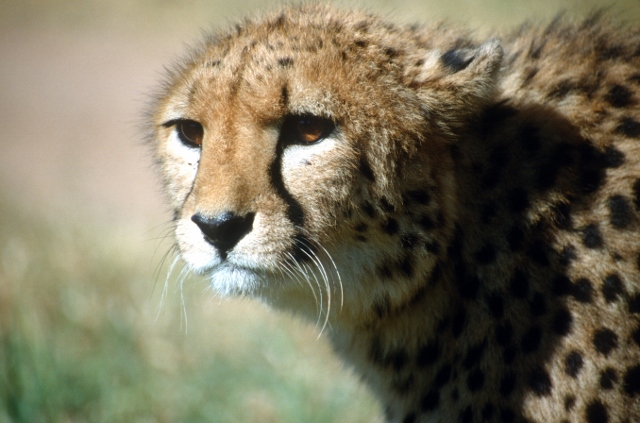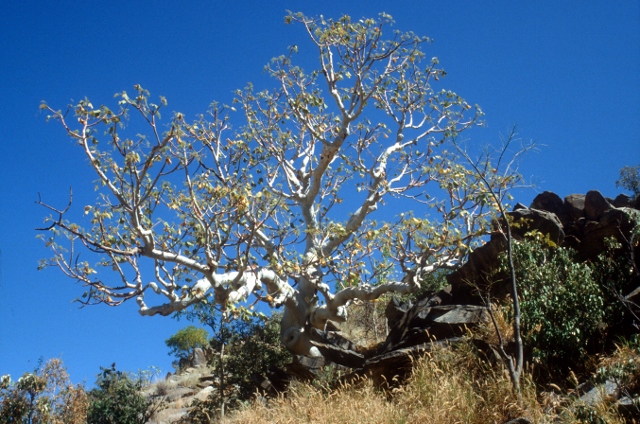April 18th, 1991 – the Skeleton Coast
The first few days of my two-week minivan tour was south of Windhoek, but now we move to the north. Our first stop is the seal colony at Cape Cross. I had seen a few seal before, in my life, but never had I seen thousands and thousands of them – my own estimate, admittedly. Stumbling over, and under, each other, fighting for a place on a sunny rock. Or swimming, apparently having fun, rolling over and turning upside down in the water.
On the way to Terrace Bay, our next camping place, we cross more of the Namib Desert. There is no sand left on the surface, all of it has been blown away by the constant south-westerly, resulting in extensive gravel plains. But if you walk on it, your feet sink in deeply, because below the gravel is plenty of soft sand left, protected as it there is from the wind.



The plains are almost completely devoid of any vegetation, except from the occasional low scrubs. Yet, in some places, near the dry river beds, strings of green curl through the desert, and grasses, low trees and even reeds, sometimes. Obviously, below the surface is still sufficient water available, even though these rivers carry water only a few days per year, if at all. In dryer areas we also encounter the occasional plants, weird species, with sturdy leaves crawling over the sand.
So far we have been driving in bright sunshine, but closer to Terrace Bay – no more than a small holiday camp with bungalows – it becomes cold and foggy, but only in the few hundred meters along the coast. Inland, sun and heat remain, but at the interface between desert and ocean the hot air comes into contact with the air over the water, which is much cooler because of the Benguela Current, an ocean current that brings cold water all the way from the Antarctic. Which causes condensation, resulting in a dense band of mist along the coast. You literally walk from the hot desert into an uncomfortably cold cloud.
At times the clouds continue offshore, which for centuries has caused poor visibility for ships travelling along this stretch, and thus a lot of wrecks from ships that ran aground. Which is why they call this the Skeleton Coast, with plenty of evidence on the beach.


April 19th – Twyfelfontein
The landscape in Namibia continues to amaze me. From the gravel-like desert plains along the coast we drove land inwards, were we found ourselves in another spectacular mountain scenery, dominated by flat-topped table mountains. And with the changing sunlight, the colours changed, too, from an initial greyish-brown to a fabulous, bright, dark red.
At Twyfelfontein, once an Afrikaner farm – with a spring of questionable reliability -, but long abandoned, there are thousands of rock engravings. This is unusual in Southern Africa, where most rock art is in the form of paintings. The origin of the engravings is also somewhat doubtful: some write that they are not older than 2000 years, with the latest having been produced around 1800 AD, others claim that the engravings outdate any of the rock paintings, like those in the nearby Brandberg area, and go back perhaps 10,000 years, to a hunter-gatherer society preceding the San people (more commonly referred to as Bushmen). Problem is that dating them is next to impossible, in the absence of pigment.
The images themselves are nice enough, but artistically – at least in my view – not comparable to the rock paintings I saw in Zimbabwe, or indeed the ones I found later in the Brandberg area. They are rather crude, but then, I suppose, if you have no other tools than stone, only a bit harder than the sandstone that serves as base for the engravings, it is not easy to create a lot of detail. They are mostly of animals, and while some of them are obviously lions and giraffes, others are much harder to identify, also by the specialists.

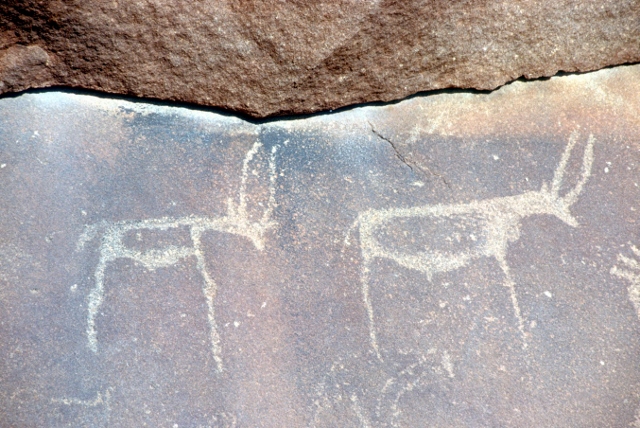
April 21st – Damaraland
We spent two nights in a camp deep in the middle of nowhere, in Damaraland, a vast area of 600 by 200 km, of which Khorixas is the administrative centre. There is a certain romance in staying at a camp in the middle of nowhere, a camp where the toilet is a hole in the ground with a chair placed over it, the seat cushion replaced by a toilet seat, and the flushing mechanism replaced by a pile of sand and a shovel. The shower is a bucket with a shower head attached to it, over a couple of planks; the drain is the desert itself. But I wonder how feasible the business plan for this camp is. Of course, the scenery all around is fabulous, but there is little else to do than taking a few uncomfortable walks, trying not to break your neck on the boulders you need to climb over. There is hardly any game, and no birds either. And you need to bring everything: there are no towns or villages with convenience stores, there are no fuel station and no garages. When, on the way to the camp, we got our second flat tyre, we spent two hours repairing.


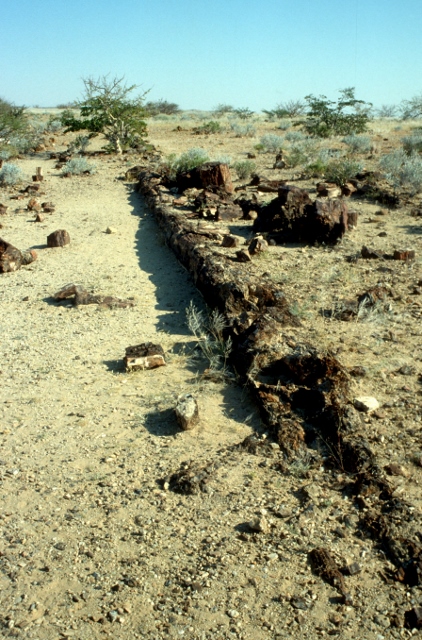
April 22nd – Peet Alberts Koppie
Another site with rock engravings is Peet Alberts Koppie, more or less on the way to the Etosha National Park. Somehow, I didn’t write about this place in my letters home, at the time, but I do have some photos, nice enough to share here.
The engravings are similar to those at Twyfelfontein.
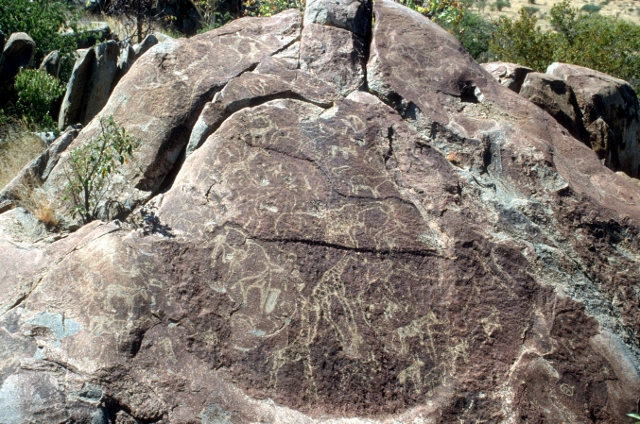

April 27th – Etosha National Park
In the years I lived in Tanzania several safari enthusiasts I met talked about Etosha, Namibia’s main safari destination. The parks in Tanzania, well, OK, but those were nothing compared to Etosha! So I came to Etosha with high expectations. And as so often with high expectations, they are bound to disappoint.
Perhaps it was the infrastructure. In Tanzania we drove on sandy tracks, four-wheel drive terrain, deep and often water-filled holes in the road. If you spotted game in the distance, you would steer off the road, to get a closer look. Or to check whether any animals were hiding behind the bushes. Sense of adventure. In Etosha a saloon car will suffice, and so did our minivan, on the comfortable tarmac roads. Or on the well-maintained secondary gravel roads. All within the high fence that delineates the outline of the park, and prevent wild animals from escaping.
We saw plenty of game, but mostly the common ones, various antelope species like springbok, gemsbok, and kudu, or zebra, and some wildebeest. Plentiful giraffes, too. And two lions, chasing a wildebeest young, two cheetah in captivity, and three elephants and a rhino near a flood-lit waterhole behind one of the lodges in the park. Distinctly less adventurous than what I was used to in Tanzania, shall we say. The price for being spoiled.
The only other distraction in the three days we spent in Etosha were, you guessed it, the birds! Now you know my views on bird watching already, but obviously I was the only one in the group with a limited interest. So we stopped for every small, ugly, brownish flying or hopping object, compared it extensively with drawings and photos in the various bird watcher’s books, and declared it rare and special, after all. Just like the previous little, brownish, ugly thing we had seen.

April 28th – the end of the tour
The last day and night we spent in a very pleasant Guest lodge, called Okonjima. Little activity, other than eating and drinking, and playing with the tame cheetah they keep here, in the garden. As long as the tame cheetah is not chasing the tame baboon, which they also keep.
Back in Windhoek we all go our own way again. I once again realise that I am not the organised tour type, although without it, I would probably not have seen so much as I did during the past two weeks, without camping gear for many of the remote locations we visited, and without the mechanical skills to travel confidently through the middle of nowhere.
But what a fabulous country this is! And there is more to come…
next: to the south of Namibia


